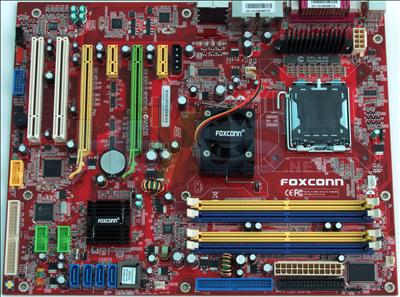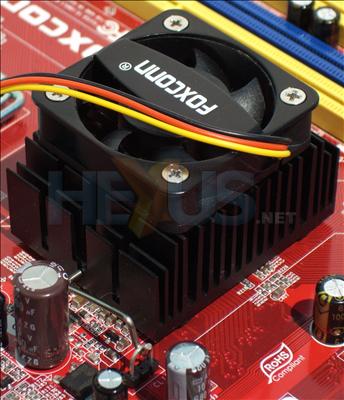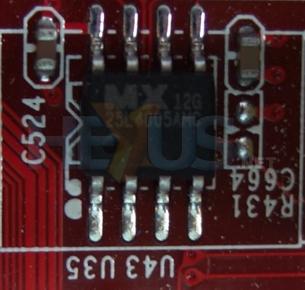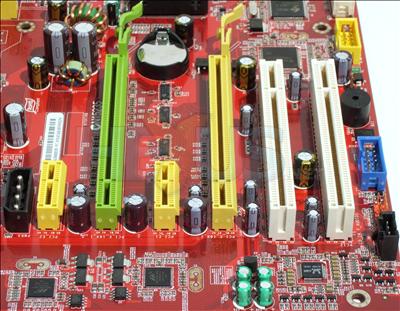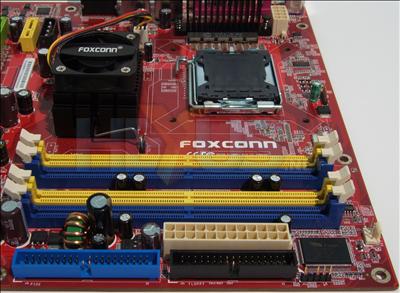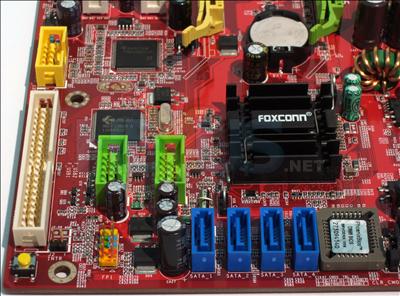Layout
There are no major faults with the overall layout of the 975X7AB. The RAM sockets are situated well away from the PCI Express 16x slots, so you won't have to remove the primary graphics card to install memory, as you do with some boards.
The CPU area is devoid of the usual capacitors found on most motherboards. Foxconn has invested the 975X7AB with a digital PWM that offers better power regulation to the CPU and, just as importantly, frees up space by removing the need for caps. and MOSFETs, making installation of larger coolers a cinch. An appreciated touch.
In these days of motherboards bristling with heat pipes and other flashy cooling provisions, Foxconn's simple HSF Northbridge cooler looks a tad old-fashioned, and its 40mm fan is a bit whiney. But it will be easily modded with your own choice of bespoke cooling, should you so desire. Heat pipes can also interfere with full-length peripheral adapters if they trail across the path.
The Foxconn even includes an SPI ROM containing a BIOS backup, which will prevent you from messing things up too much when overclocking. However, it does introduce its own issues, of which more later.
Unfortunately, if you're planning to use a couple of double-width ATi graphics cards in CrossFire mode, you will only be able to make use of one of the PCI Express 1x slots and one of the PCI slots at the same time. This is a common occurrence with limited ATX form factor board sizes, and Foxconn has at least ensured you still get one of each, but it's worth bearing in mind nonetheless.
The main 24-pin power connector is a bit of a snug fit in between the floppy connector and memory sockets. But its location is near the top and should allow you to route the supply cable out of the way of other components and the flow of air.
A useful feature when you're building and overclocking will be the on-board power switch, which will allow you to test your configuration without having to hook up all the fiddly chassis cables or resort to a the trusty screwdriver approach. The quartet of SATA2 ports is a little meagre, but probably won't be a limitation for most people. Who needs more than four hard disks anyway, now you can get 750GB drives? They're also in a convenient location, near where your hard disk bays are likely to be.
The array of ports is pretty standard, now that eSATA is becoming a regular motherboard feature. It's good to see both coaxial and optical S/PDIF audio connections, and you may just find the printer port comes in handy. Maybe. [advert]






